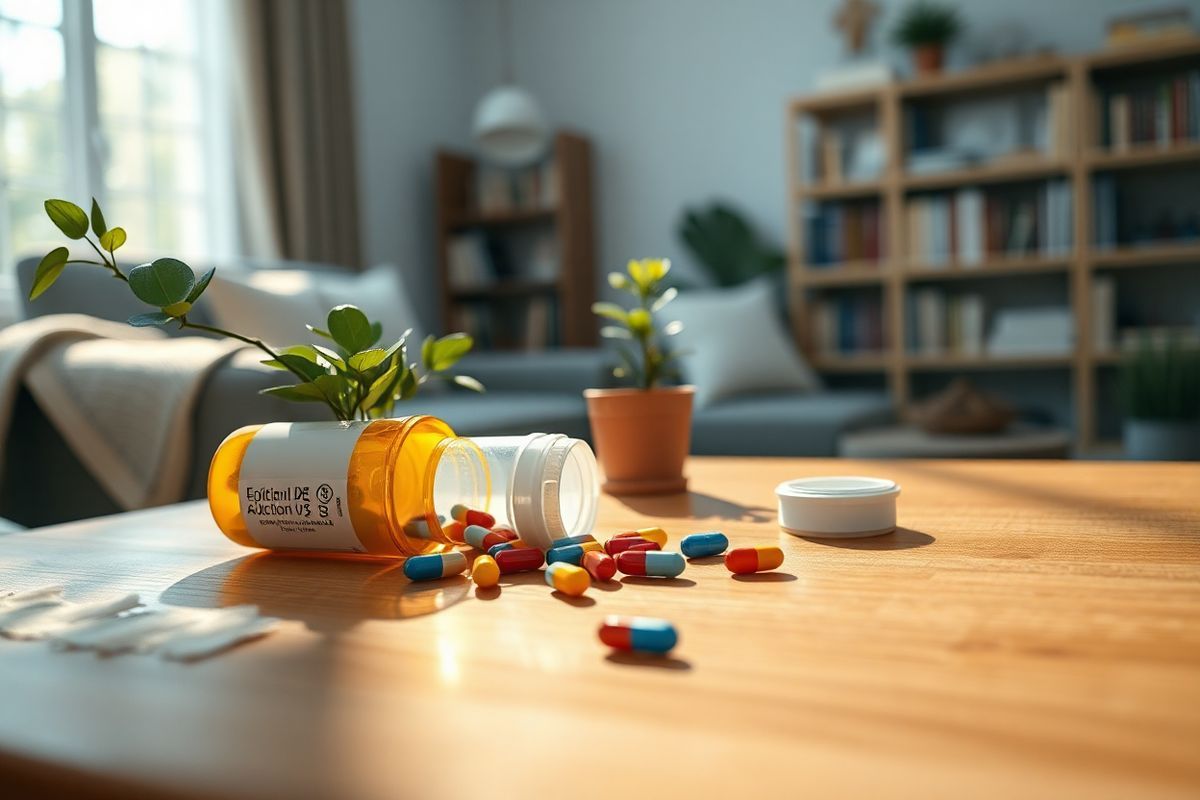Table of Contents
Exploring Opioid Dependence: What You Need to Know

Opioid dependence is often misconceived as synonymous with addiction. However, it is essential to differentiate between the two. Opioid dependence refers to a physiological state where an individual’s body adapts to the presence of opioids, leading to withdrawal symptoms when the drug is not available. This physiological adaptation can occur without the behavioral aspects of addiction, such as compulsive use despite negative consequences.
According to the National Institute on Drug Abuse (NIDA), opioid receptors in the brain interact with naturally occurring molecules to regulate essential functions such as pain relief and stress responses (NIDA, 2023). When opioids are introduced, they trigger the release of neurotransmitters that produce pleasurable sensations, creating a strong desire to continue use. Over time, this can lead to tolerance, where increasing doses are required to achieve the same effect, and ultimately, dependence (NIDA, 2023).
Key Characteristics of Opioid Dependence
- Tolerance Development: Individuals require higher doses to achieve the same effects.
- Withdrawal Symptoms: Upon cessation, individuals experience symptoms such as muscle aches, nausea, and anxiety (Mayo Clinic, 2023).
- Physical Adaptation: The body’s physiological functions become reliant on the drug, but this does not necessarily imply addiction.
Defining Opioid Use Disorder: A Comprehensive Overview

Opioid use disorder is characterized by a problematic pattern of opioid use that leads to significant impairment or distress. The Diagnostic and Statistical Manual of Mental Disorders (DSM-5) outlines specific criteria for diagnosing OUD, including persistent desire to cut down on use, unsuccessful efforts to control use, and continued use despite social or interpersonal problems (CDC, 2023).
OUD is a treatable chronic disease, and its recognition as such is crucial in combating the stigma often associated with substance use disorders. It is important to note that OUD can affect anyone, regardless of background or socio-economic status (Hopkins Medicine, 2023).
Diagnostic Criteria
According to the DSM-5, a diagnosis of OUD requires at least two of the following criteria:
- Taking opioids in larger amounts or over a longer period than intended.
- Persistent desire or unsuccessful efforts to cut down on opioid use.
- Spending significant time obtaining, using, or recovering from the effects of opioids.
- Craving for opioids.
- Failing to fulfill major obligations at work, school, or home due to opioid use.
The Symptoms of Opioid Dependence: Recognizing the Signs
Identifying the signs of opioid dependence is crucial for early intervention and treatment. Symptoms can be both physical and psychological, and recognizing these can facilitate timely medical assistance.
Common Symptoms of Opioid Dependence
- Physical Symptoms: Withdrawal symptoms, including muscle aches, insomnia, and gastrointestinal distress (Cleveland Clinic, 2023).
- Behavioral Symptoms: Increased time spent on acquiring opioids, neglecting responsibilities at work or home, and engaging in risky behaviors (Mayo Clinic, 2023).
- Psychological Symptoms: Persistent cravings and feelings of anxiety when not using opioids.
Recognizing these signs early can lead to more effective interventions, potentially reducing the severity of the disorder.
How Opioid Use Disorder Develops: The Path to Addiction
Understanding the progression from opioid use to opioid use disorder is vital. The development of OUD is influenced by several factors, including the method of drug administration, the duration of use, and individual susceptibility due to genetic, psychological, and environmental factors.
Factors Contributing to OUD Development
- Genetic Vulnerability: Family history of substance use disorders increases the risk (Cleveland Clinic, 2023).
- Duration of Use: Research indicates that using opioids for more than a few days significantly increases the likelihood of developing OUD (Mayo Clinic, 2023).
- Method of Use: Using opioids in ways other than prescribed, such as crushing pills for injection or snorting, can escalate the risk of addiction (NIDA, 2023).
As individuals continue using opioids, they may experience diminished effects, compelling them to increase their doses. This cycle of tolerance and increased usage can lead to a state where opioids are used not only for pain relief but also to stave off withdrawal symptoms.
Effective Treatments for Opioid Dependence and Use Disorder
Treatment for OUD is multifaceted, often combining medication-assisted treatment (MAT) with behavioral therapy. The goal is to normalize brain chemistry, relieve cravings, and provide coping strategies to prevent relapse.
Medication-Assisted Treatment Options
- Methadone: A long-acting opioid that helps reduce withdrawal symptoms and cravings (Hopkins Medicine, 2023).
- Buprenorphine: A partial agonist that alleviates cravings without producing a euphoric high (CDC, 2023).
- Naltrexone: An opioid antagonist that blocks the euphoric effects of opioids, useful for relapse prevention (Mayo Clinic, 2023).
Behavioral Therapy Approaches
- Cognitive Behavioral Therapy (CBT): Focuses on identifying and changing negative thought patterns.
- Contingency Management: Provides tangible rewards for positive behaviors, such as abstinence.
- Support Groups: Programs like Narcotics Anonymous offer community support and shared experiences to aid recovery (NIDA, 2023).
The combination of these treatments has shown effective outcomes, reducing the risk of relapse and improving overall quality of life for those diagnosed with OUD.
Reference
- Centers for Disease Control and Prevention. (2023). Preventing Opioid Use Disorder. Retrieved from https://www.cdc.gov/overdose-prevention/prevention/preventing-opioid-use-disorder.html
- Cleveland Clinic. (2023). Opioid Use Disorder: What It Is, Symptoms & Treatment. Retrieved from https://my.clevelandclinic.org/health/diseases/24257-opioid-use-disorder-oud
- Hopkins Medicine. (2023). Opioid Use Disorder. Retrieved from https://www.hopkinsmedicine.org/health/conditions-and-diseases/opioid-use-disorder
- Mayo Clinic. (2023). How Opioid Use Disorder Occurs. Retrieved from https://www.mayoclinic.org/diseases-conditions/prescription-drug-abuse/in-depth/how-opioid-addiction-occurs/art-20360372
- National Institute on Drug Abuse. (2023). Opioids
FAQ
What is the difference between opioid dependence and opioid use disorder? Opioid dependence is primarily a physiological condition characterized by tolerance and withdrawal symptoms, while opioid use disorder is a broader behavioral condition that includes compulsive use despite negative consequences.
What are the signs of opioid use disorder? Signs include taking larger amounts of opioids than intended, unsuccessful attempts to cut down, spending significant time on opioid-related activities, and continued use despite negative social or interpersonal consequences.
How is opioid use disorder treated? Treatment typically involves a combination of medication-assisted treatment (MAT) and behavioral therapies, designed to help patients manage cravings and develop coping strategies.
Can opioid use disorder be treated? Yes, opioid use disorder is a treatable condition, and many individuals can achieve recovery with appropriate interventions and support.
What should I do if I suspect someone has an opioid use disorder? Encourage them to seek professional help and offer support in finding treatment options. Early intervention can be critical in managing the condition.









